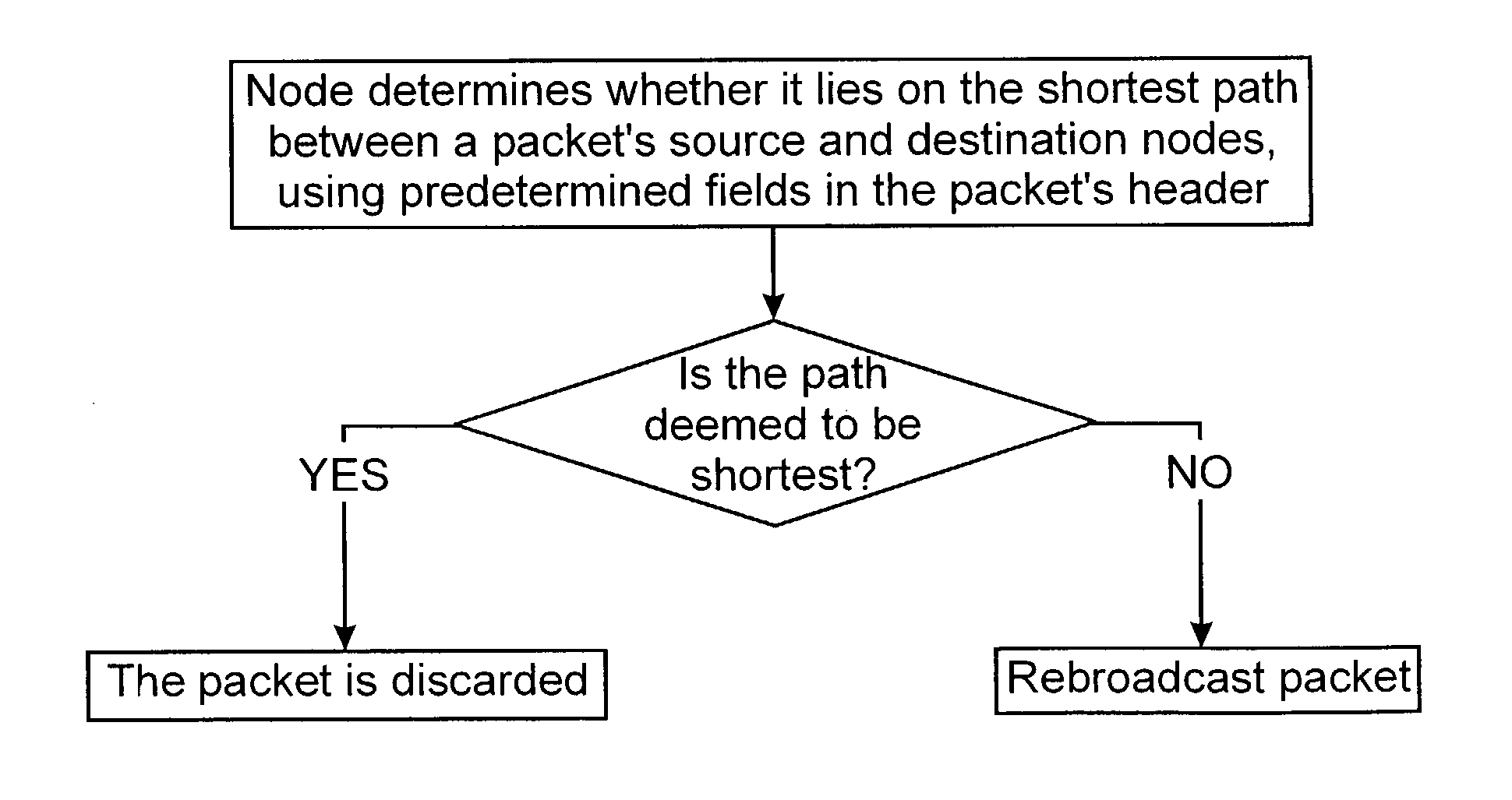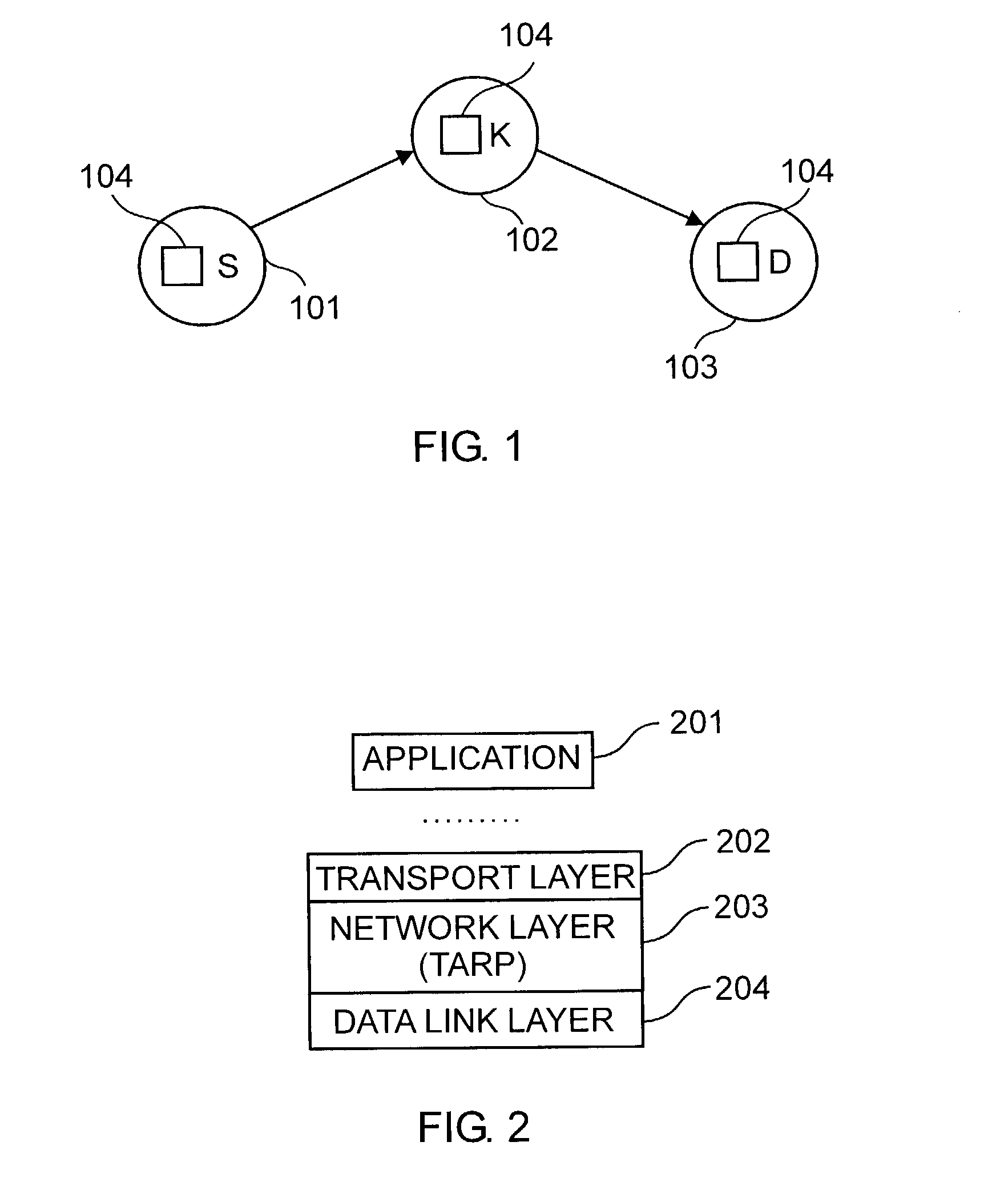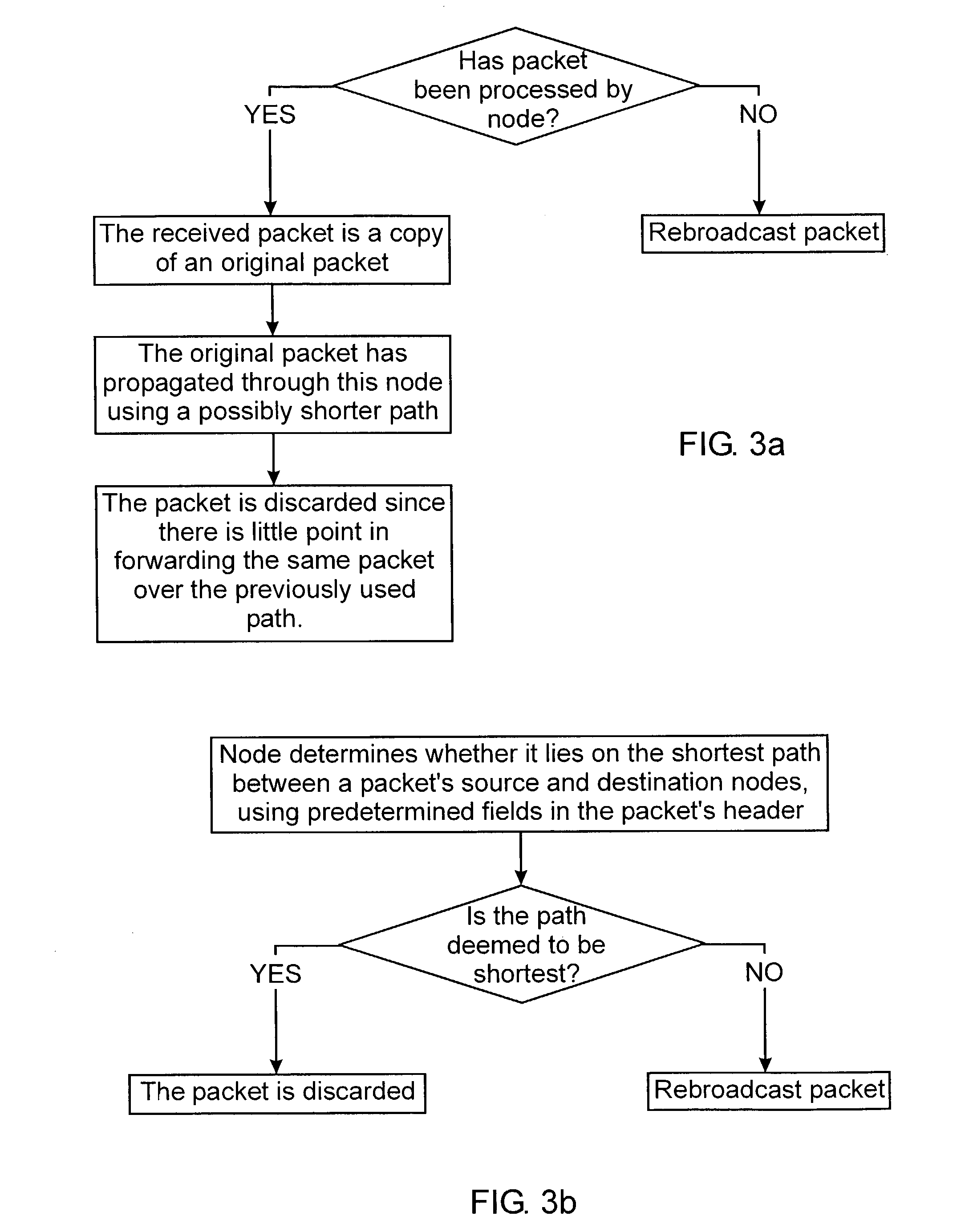Method for routing ad-hoc signals
- Summary
- Abstract
- Description
- Claims
- Application Information
AI Technical Summary
Problems solved by technology
Method used
Image
Examples
Embodiment Construction
[0046]Typically, an ad-hoc network (AHN) offers the possibility to connect large numbers of communication devices, in the form of nodes, without significant infrastructure costs. Each node within the AHN has three functions. As is illustrated in FIG. 1, a node is either for being a source 101 of signal data transmitted through the AHN, a final destination 103 of signal data transmitted through the ad-hoc network, or a relay 102 for propagating signal data between two nodes. Through ad-hoc networks various types of signal data are transmittable from one node to another node as long as the nodes are in transmission and reception range with each other. Node K 102 is intermediate to nodes S and D, and therefore packets from nodes S to D, or D to S, are preferably propagated through node K.
[0047]Ad-hoc networks are dynamic networks that support moving, removing and addition of nodes therein. Typically, prior art AHN require large bandwidth nodes to manage signals propagating between the ...
PUM
 Login to View More
Login to View More Abstract
Description
Claims
Application Information
 Login to View More
Login to View More - R&D
- Intellectual Property
- Life Sciences
- Materials
- Tech Scout
- Unparalleled Data Quality
- Higher Quality Content
- 60% Fewer Hallucinations
Browse by: Latest US Patents, China's latest patents, Technical Efficacy Thesaurus, Application Domain, Technology Topic, Popular Technical Reports.
© 2025 PatSnap. All rights reserved.Legal|Privacy policy|Modern Slavery Act Transparency Statement|Sitemap|About US| Contact US: help@patsnap.com



